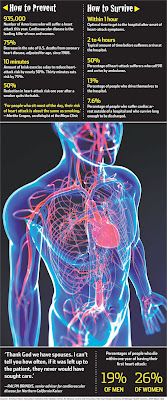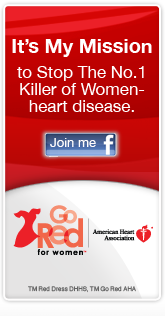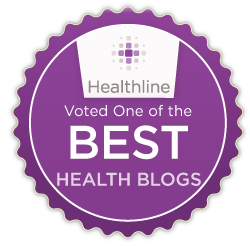I love a good infographic. What a fun trend and great way to present information in our ever-more-visual, data-saturated media age.
 So of course I’m going to love a heart-health infographic, and this one from the Wall Street Journal does not disappoint. (Click on it to see larger.) It accompanied an article called “The Guide to Beating a Heart Attack.” Outlined in seven simple steps, it tells the same story I’ve been trying to communicate here: most heart disease and heart attacks are preventable. You, however, must make the right choices.
So of course I’m going to love a heart-health infographic, and this one from the Wall Street Journal does not disappoint. (Click on it to see larger.) It accompanied an article called “The Guide to Beating a Heart Attack.” Outlined in seven simple steps, it tells the same story I’ve been trying to communicate here: most heart disease and heart attacks are preventable. You, however, must make the right choices.It’s been eight months since my heart attack and I’ve been committed to doing all the right things. So let’s review my report card and see how I measure up to the seven steps to beating heart disease.
KNOW YOUR NUMBERS
The Wall Street Journal calls this “the basics,” and I love this quote: “Knowing your cholesterol and blood pressure numbers is as fundamental to heart health as knowing the alphabet is to reading.” Yet about one-third of people with high-risk levels don’t know it.
According to WSJ, the optimal LDL, or bad cholesterol, is under 100; HDL, or good cholesterol, is over 60; and blood pressure is less than 120/80.
A++ for me. My LDL is 62, my HDL is 34, (yes, it is less than 60, but since my LDL is so low the ratio that my cardiologist cares about is fine) and my blood pressure is 100/60. Take that, heart disease!
NO DUH: DON’T SMOKE
Not a problem, haven’t smoked since college. And even then I was a “social” smoker, until one day my senior year it was the first thing I did when I woke up. Gross. Quit cold turkey that minute and haven’t had one since.
My grade: A- (for having ever smoked at all)
EXERCISE
I’ve earned an A+ on this one, mostly because I like working out so much. But here’s the good news for those who do not like it so much, do not have the time for marathon training, or don’t have access to personal training.
Guidelines urge three hours a week of brisk exercise to maintain heart health, but many people who can’t find the time to work up a sweat for 30 minutes most days don’t bother. “It’s the all or nothing phenomenon,” says Martha Grogan, a cardiologist at Mayo Clinic.
But how about 10 minutes a day? While the 30-minute target is associated with a 70% reduction in heart-attack risk over a year, Mayo researchers analyzed the data and noticed that a brisk 10-minute walk a day results in a nearly 50% reduction compared with people who get hardly any exercise.
KEEP MOVING
This one is interesting. Even if you are active, and get your three recommended hours of exercise a week, too much sitting can negate that positive effect.
A study from Australian researchers published two years ago found that spending more than four hours a day in front of a computer or television was associated with a doubling of serious heart problems, even among people who exercised regularly. Prolonged sitting was associated with higher levels of inflammatory markers in the blood, higher body weight and lower levels of HDL, or good cholesterol, indicating that sedentary behavior has its own bad biology apart from whether you’re physically active.
Thank goodness I’m home with my 4-year-old and hardly sit at all, so I get a passing grade of B on this one. For those who must sit for work, the article recommends getting up every 30 minutes or getting a stand-up desk for computer work. Taking walk breaks instead of coffee or snack breaks, taking the stairs, and parking far away will also help.
BE HAPPY
Easier said than done, of course, but stress — and the stress of being unhappy or worried — takes its toll on your heart. As my doctor said to me last fall: feed your soul. Make yourself a priority. (And if you need to, like me, get help, professional and/or pharmaceutical.)
I get at least a B+ on this. Though I went through some pretty difficult depression the first few months post-heart attack, feeding my soul, exercising my body, focusing on my family, and taking my antidepressant have made a huge difference. I am happy.
EAT YOUR VEGGIES
Eat healthy. Yeah, I’m all over that. I have to give myself a B+, though, because to earn an A+ I’d really have to go vegan.
B+ to me means I hardly eat any dairy (save fat-free yogurt and milk), only lean protein (chicken, turkey, tofu, beans, and fish), two eggs a week, the right oils, and lots of fruit, veggies, and whole grains.
GET ENOUGH SLEEP
Here’s my worst grade of all: C- I regularly don’t go to bed until midnight and then I don’t fall asleep until 1 a.m. or later. Some of this is due to the medications I take; timed just wrong and I’ll lay awake for hours.
Here’s what the article has to say about sleep:
Sleep’s role in protecting the heart is underestimated, says Mayo’s Dr. Grogan. “If you get one less hour of sleep than you need each night, you’ve basically pulled an all-nighter a week,” she says. Chronic sleep deprivation can lead to high blood pressure, weight gain and increase your risk of diabetes, she says.
So sleeping is good for you! If only my kids understood that and let mommy sleep in.
This is my report card after having had a heart attack. Earn better grades than me and maybe you’ll never have one.



Recent Comments